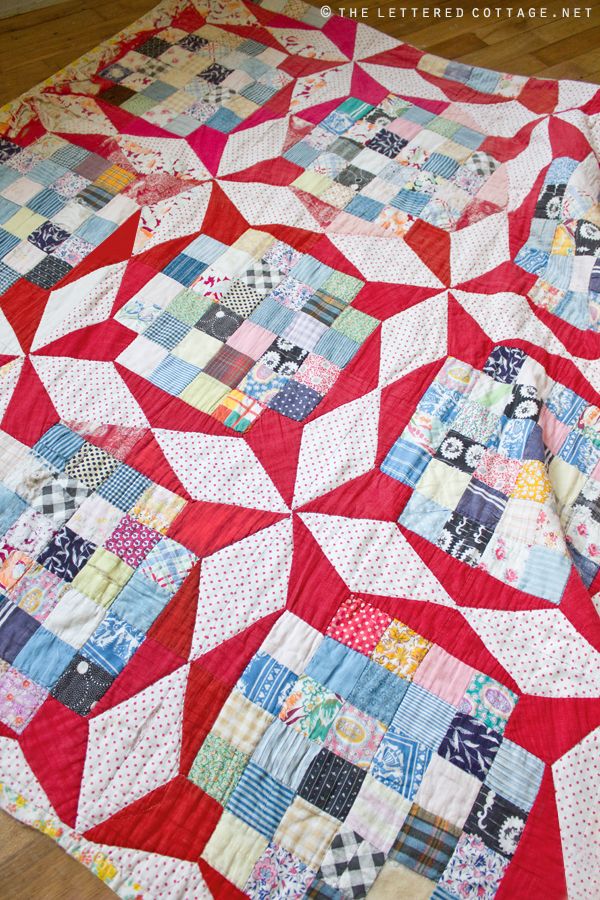Bourbon Street blocks
Um, wait, where did July go? I definitely lost track of time with my bee commitments. I have yet to make my July blocks, but I'm leading the August quilt, so I can't be making everyone wait on me while I catch up! Today I'll share the prompt for our August Love circle quilt here. We're making a Bourbon Street quilt, inspired by this vintage quilt shared on The Lettered Cottage
blog.
Connecting Threads has the paper pieced pattern for Bourbon Street available for instant download. They're donating copies to the members of Love circle, a nice gesture in support of our charitable quilting. The pattern is produced by Sassafras Lane Designs. It's pretty straight forward if you're familiar with paper piecing.
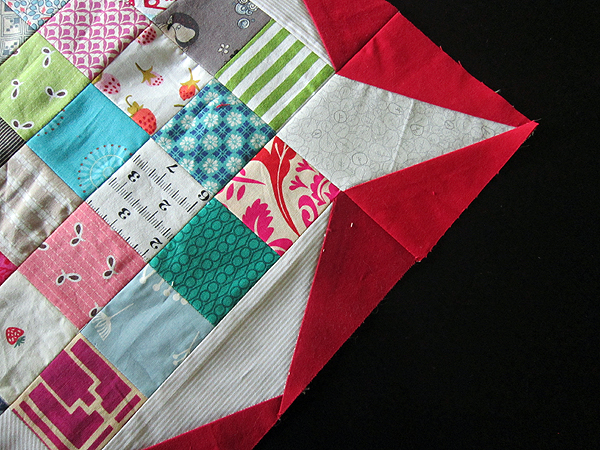
{Fabrics}
What really draws me to this quilt is the red and white diamond "sashing." We're going to create a similar look, just reversing the white and red placement in the sashing... because I did that on accident and why not?
For the red diamonds, called "background" fabric in the pattern, use a solid red fabric. A range of reds is OK for this quilt, but let's avoid the orange/coral side of things (top right) and the brown/burgundy versions of red (bottom right). Look for a real red like Kona Rich Red, Kona Red, Kona Tomato, Kona Chinese Red, etc
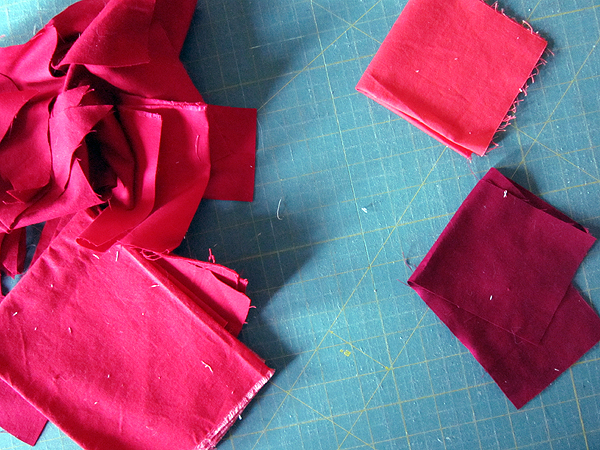
For the "accent" fabric in the pattern, use a low volume white or cream fabric. Please use two different prints in your block or one print/one solid. Variety will help the blocks work well together. Please avoid low volume fabrics with colors other than neutrals or with over-all darker value (like these dense text fabrics or the darker taupe print). In this photo, examples of very low volume neutrals that would work well are gathered below, with fabrics that I ruled out shown above.
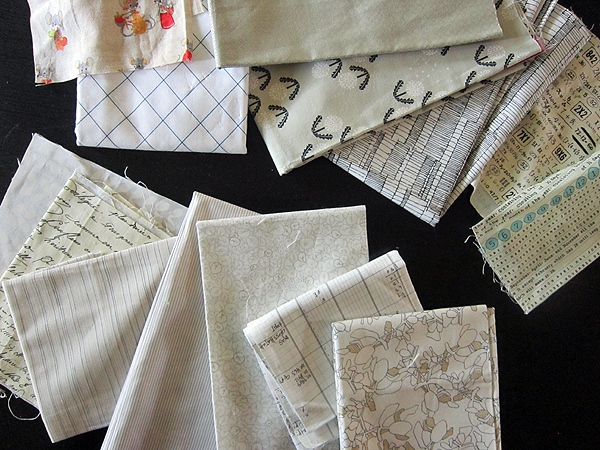
You'll need (32) 2.5" squares for the patchwork center. I'd like these to feel scrappy, but with an bent towards the cool spectrum. Please use about 10 blue squares (any shade of blue, aqua, teal, etc. and navy is great too!), about 10 neutral squares (lean towards more low volume neutrals, include some gray and avoid dark brown), some red, purple and green squares and then whatever else to total 32.
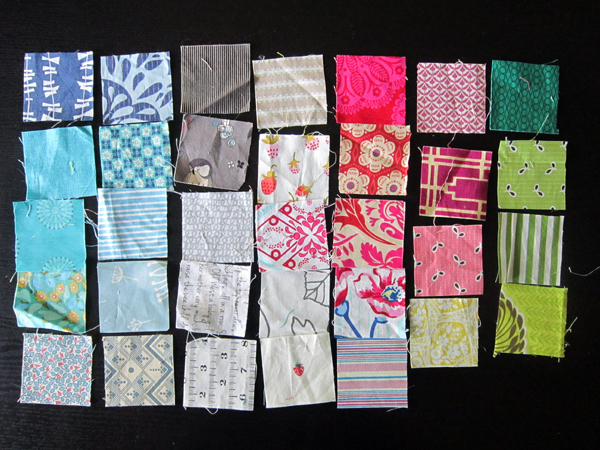
Of course, this is not a science! I really selected my squares without knowing where I was going, just tossing them into this scrappy sea. After I landed on a color balance I liked, I organized them by color and value so that it would be easier to create a color recipe for the bee. Don't worry! If you like it; it's good!
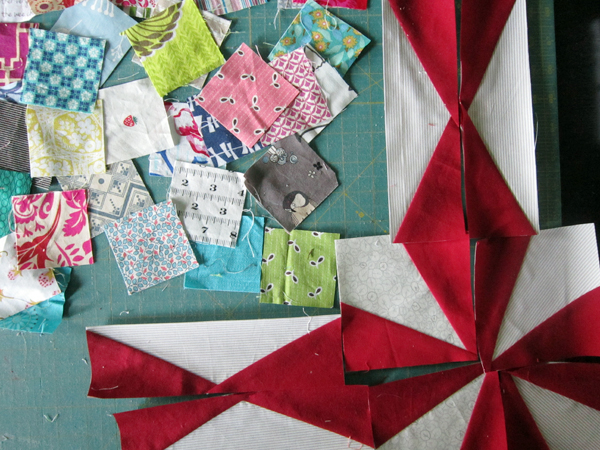
{Sewing}
I'm asking bee members to each make one complete Bourbon Street block. You'll need (4) of each paper piecing unit type and both templates A and B, all from the pattern. Remember, you're cutting the low volume fabrics with the templates!
After paper piecing and trimming the units, please remove papers before joining with patchwork squares.
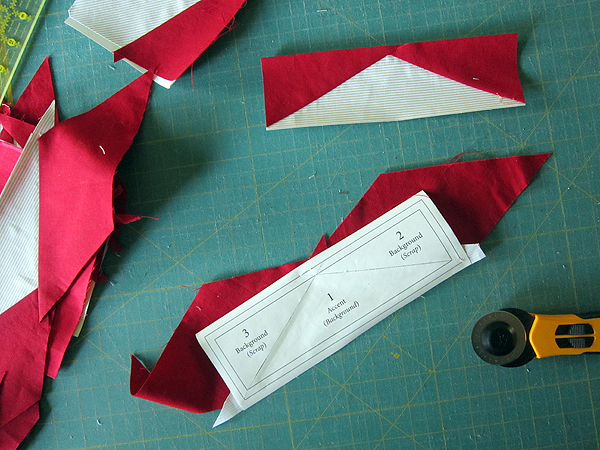
I created the paper pieced units first, then began selecting scraps starting with the blues.
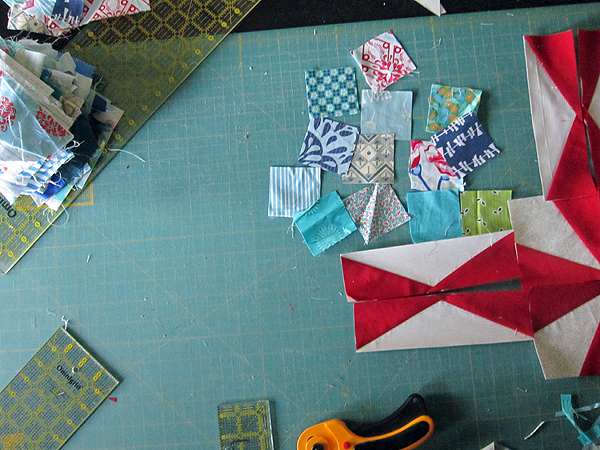
Join your patchwork squares with a true (not a scant) 1/4" seam. This will make your patchwork the right size to match those paper pieced units.
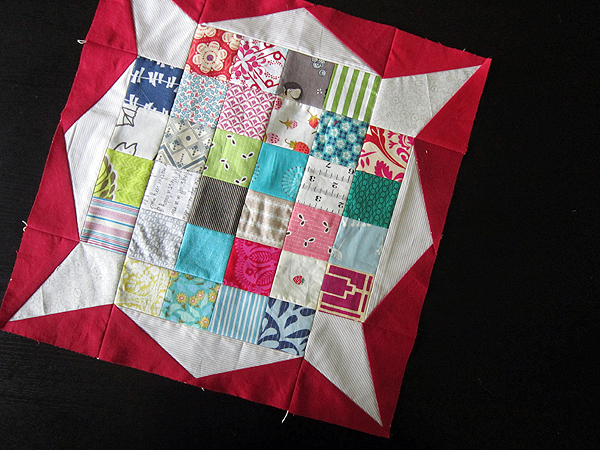
Ta da! One Bourbon Street block, 16.5" unfinished. Doesn't it look nothing like the quilt? The magic is all at the edges, where the blocks join together. Can't wait to combine my starter block with yours, bee mates. Thanks for sewing with me!
Connecting Threads has the paper pieced pattern for Bourbon Street available for instant download. They're donating copies to the members of Love circle, a nice gesture in support of our charitable quilting. The pattern is produced by Sassafras Lane Designs. It's pretty straight forward if you're familiar with paper piecing.

{Fabrics}
What really draws me to this quilt is the red and white diamond "sashing." We're going to create a similar look, just reversing the white and red placement in the sashing... because I did that on accident and why not?
For the red diamonds, called "background" fabric in the pattern, use a solid red fabric. A range of reds is OK for this quilt, but let's avoid the orange/coral side of things (top right) and the brown/burgundy versions of red (bottom right). Look for a real red like Kona Rich Red, Kona Red, Kona Tomato, Kona Chinese Red, etc

For the "accent" fabric in the pattern, use a low volume white or cream fabric. Please use two different prints in your block or one print/one solid. Variety will help the blocks work well together. Please avoid low volume fabrics with colors other than neutrals or with over-all darker value (like these dense text fabrics or the darker taupe print). In this photo, examples of very low volume neutrals that would work well are gathered below, with fabrics that I ruled out shown above.

You'll need (32) 2.5" squares for the patchwork center. I'd like these to feel scrappy, but with an bent towards the cool spectrum. Please use about 10 blue squares (any shade of blue, aqua, teal, etc. and navy is great too!), about 10 neutral squares (lean towards more low volume neutrals, include some gray and avoid dark brown), some red, purple and green squares and then whatever else to total 32.

Of course, this is not a science! I really selected my squares without knowing where I was going, just tossing them into this scrappy sea. After I landed on a color balance I liked, I organized them by color and value so that it would be easier to create a color recipe for the bee. Don't worry! If you like it; it's good!

{Sewing}
I'm asking bee members to each make one complete Bourbon Street block. You'll need (4) of each paper piecing unit type and both templates A and B, all from the pattern. Remember, you're cutting the low volume fabrics with the templates!
After paper piecing and trimming the units, please remove papers before joining with patchwork squares.

I created the paper pieced units first, then began selecting scraps starting with the blues.

Join your patchwork squares with a true (not a scant) 1/4" seam. This will make your patchwork the right size to match those paper pieced units.

Ta da! One Bourbon Street block, 16.5" unfinished. Doesn't it look nothing like the quilt? The magic is all at the edges, where the blocks join together. Can't wait to combine my starter block with yours, bee mates. Thanks for sewing with me!
